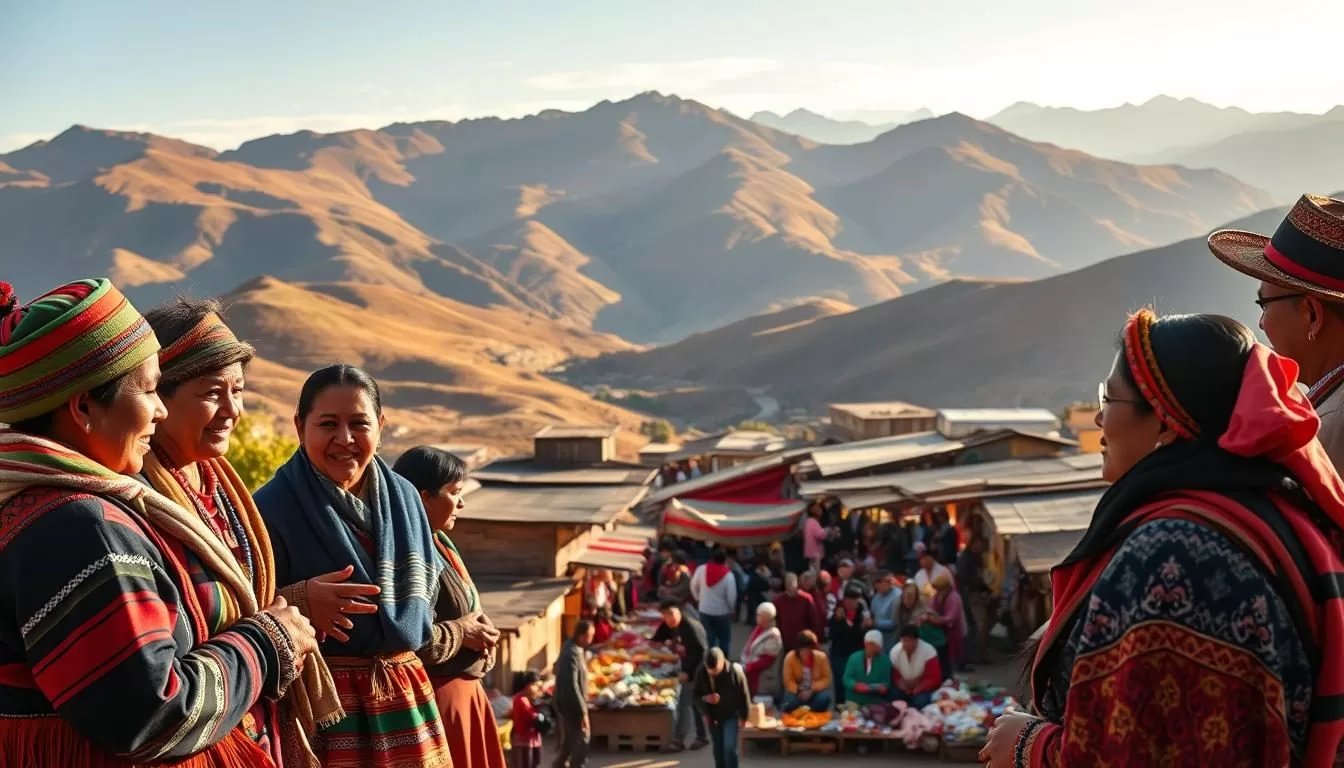Peru is a country where language tells a story of history, culture, and identity. Spanish is the most common, spoken by 82% of the population, but it’s just one part of a vibrant linguistic tapestry.
Beyond Spanish, Quechua and Aymara hold official status, especially in indigenous regions. These indigenous languages have survived centuries of change, reflecting the resilience of local cultures.
Understanding this diversity enriches your experience. Whether you’re exploring the Andes or the Amazon, knowing the dialects and traditions of each region adds depth to your journey.
Introduction to Peru’s Linguistic Landscape
Exploring the language landscape here reveals a tapestry of traditions and identities. This South American nation is home to a remarkable number of languages, each tied to specific areas and groups. From bustling cities to remote villages, the linguistic diversity is a testament to centuries of cultural evolution.
An Overview of Multilingualism
In urban regions, Spanish dominates, spoken by 84% of the population. However, rural and indigenous communities preserve their native tongues. Quechua, for example, is spoken by 13% of the population, while Aymara is used by 1.7%. These languages are more than communication tools—they are markers of identity.
This multilingualism is not just a modern phenomenon. Historical isolation of communities led to a rich linguistic heritage, with over 15 language families represented. Today, this diversity is both a cultural treasure and a challenge, as some languages face extinction.
Why This Matters for Your Travel and Cultural Experience
Understanding the linguistic landscape enhances your journey. In rural areas, knowing a few words of Quechua or Aymara can open doors to deeper connections. It’s a way to honor the local culture and engage meaningfully with the population.
Language also reflects the history of a group. For instance, the Asháninka language, spoken by around 35,000 people, tells stories of resilience and adaptation. By appreciating these nuances, you gain a richer understanding of the country’s identity.
| Language | Percentage of Speakers | Population |
|---|---|---|
| Spanish | 84% | 29 million |
| Quechua | 13% | 3.5 million |
| Aymara | 1.7% | 500,000 |
Peru: Official and widely spoken languages
The linguistic landscape of this South American nation is a blend of history and modernity. Spanish dominates as the primary tongue, spoken by 94.4% of the population. It’s the language of education, media, and government, shaping daily life across urban and rural areas.
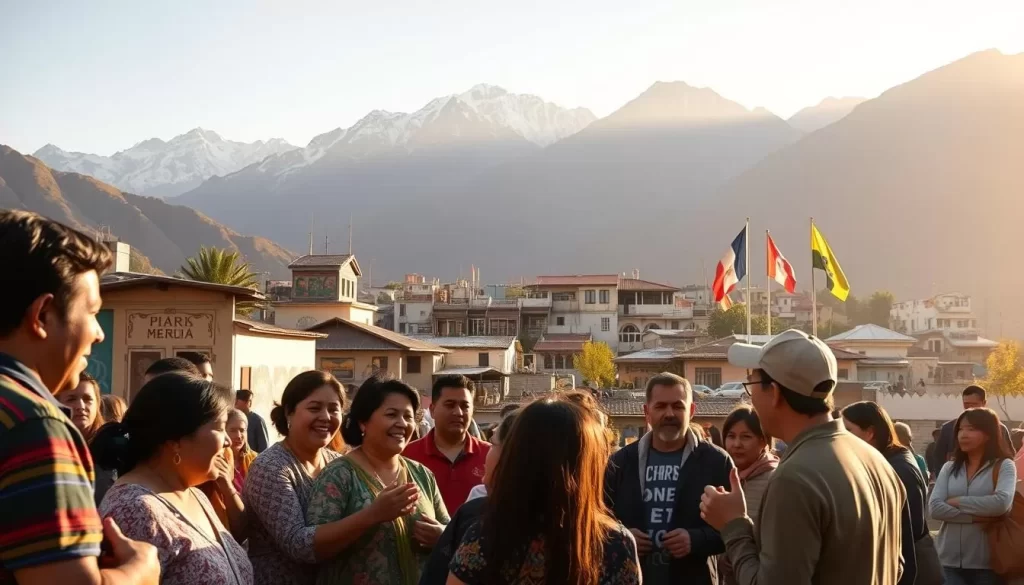
Spanish: The National Tongue
Spanish arrived with colonization and became deeply rooted in the culture. Today, it’s the most widely taught and used language. Its influence extends to regional dialects, which vary from the Andes to the coast.
Despite its dominance, Spanish has absorbed elements from indigenous languages. Words from Quechua and Aymara enrich its vocabulary, reflecting a unique blend of cultures.
Embracing Indigenous Voices
Quechua and Aymara hold co-official status, recognized by the Constitution’s Article 48. Quechua, spoken by over 10 million people, is a vital part of the highland identity. Aymara, used in the southern regions, also plays a significant role.
Indigenous communities have preserved their native languages despite centuries of Spanish influence. Their efforts ensure these languages remain alive in everyday conversations and cultural celebrations.
- Spanish is the main language, used in education and government.
- Quechua and Aymara are co-official, reflecting cultural diversity.
- Indigenous communities actively preserve their linguistic heritage.
When you visit, take time to appreciate this dual heritage. Learning a few words of Quechua or Aymara can deepen your connection with local communities. It’s a way to honor their history and culture.
Regional Variations and Dialect Diversity
From the Andes to the coast, the way Spanish is spoken changes dramatically. Each region has its own unique flavor, shaped by history, culture, and geography. These differences make the language a vibrant reflection of local identity.
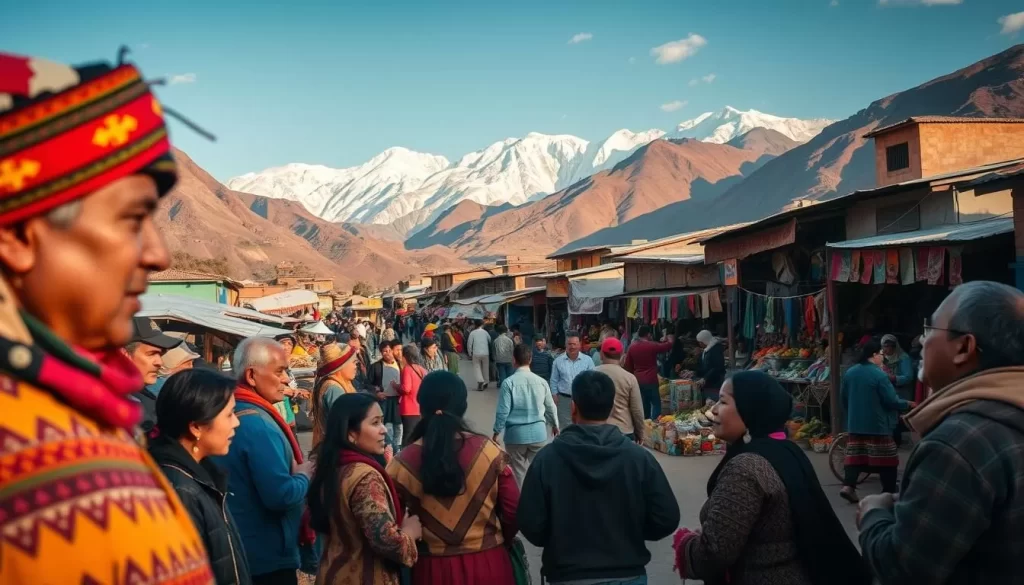
Differences in Andean, Coastal, and Amazon Spanish
In the Andes, Spanish carries a rhythmic intonation influenced by Quechua. This dialect, known as Andean Spanish, often includes indigenous words and phrases. It’s a testament to the deep cultural ties between the language and the land.
On the coast, the dialect is faster and more urban. Coastal Spanish is influenced by African and European settlers, creating a unique blend. Words like “chévere” (cool) are commonly used, adding a lively touch to conversations.
In the Amazon, Spanish mixes with native languages like Asháninka. This creates a distinct dialect that reflects the region’s biodiversity. The way people speak here is as diverse as the rainforest itself.
Local Slang and Unique Expressions
Every region has its own slang, offering a glimpse into local life. In Lima, you might hear “pata” (friend) or “jato” (house). These terms are widely used and instantly recognizable.
In the highlands, expressions like “ya pues” (okay then) are common. They reflect the laid-back yet resilient spirit of the Andean people. These phrases are more than words—they’re a way of life.
- Andean Spanish: Rhythmic, with Quechua influences.
- Coastal Spanish: Fast-paced, with African and European roots.
- Amazon Spanish: Blends with native languages for a unique dialect.
Understanding these variations enriches your experience. Whether you’re in a bustling city or a remote village, the way people speak tells a story. It’s a journey through culture, history, and identity.
The Enduring Legacy of Indigenous Language Influence
The resilience of indigenous languages in South America tells a story of cultural survival and adaptation. These languages, deeply rooted in history, continue to thrive today, reflecting the strength of their communities. They are not just tools for communication but living expressions of identity and pride.
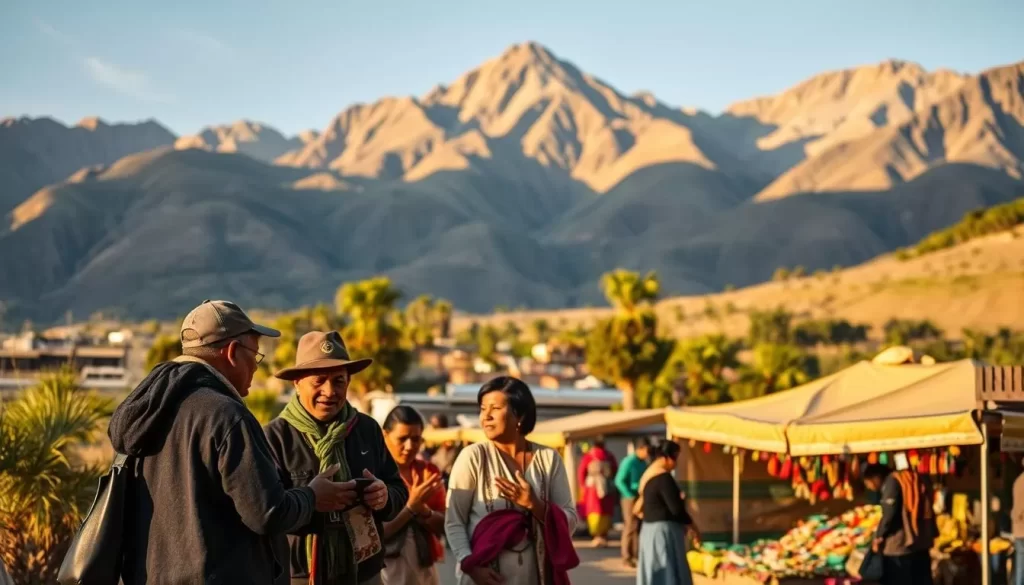
Quechua: History, Revival, and Everyday Use
Quechua, once the language of the Inca Empire, has endured centuries of change. Despite colonial pressures, it remains a vital part of the highland identity. Revival initiatives have helped preserve its rich vocabulary and grammar, ensuring it stays relevant in modern contexts.
In rural areas, Quechua is still the primary language for many. It’s used in daily conversations, traditional ceremonies, and even in local media. This variation of the language connects people to their ancestors and cultural heritage.
Aymara: Cultural Roots and Modern Adaptations
Aymara, spoken near Lake Titicaca, has a unique cultural significance. It’s a language that has adapted to modern life while preserving its ancient roots. Communities here use Aymara in education, art, and daily interactions, keeping it alive.
Efforts to document and teach Aymara have increased its visibility. This way of preserving the language ensures it remains a cornerstone of the nation’s cultural diversity.
Understanding these languages offers deeper insights into the cultural fabric of the region. By learning a few words, you can connect with local traditions and honor their enduring legacy. For more on Peru’s linguistic landscape, explore the rich diversity that defines this vibrant nation.
Preservation Efforts and Future Outlook
Efforts to preserve indigenous languages are shaping the future of cultural heritage. From the mountain regions to the coast, communities and governments are working together to ensure these voices are not lost. The focus is on documenting, revitalizing, and celebrating the richness of native tongues.
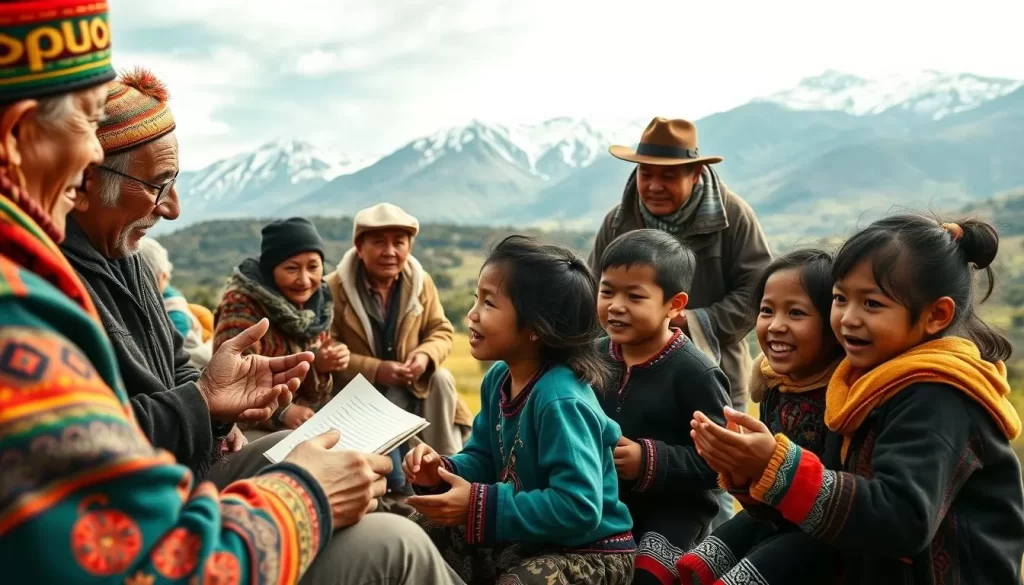
Government Initiatives and Language Documentation
Government programs are playing a key role in safeguarding linguistic diversity. Projects like the Quispe Chequea tool generate fact-checked content in indigenous languages, including Quechua and Aymara. This initiative ensures accurate information reaches communities in their native tongues.
Documentation efforts are also crucial. Teams of linguists and community members record vocabulary and grammar, preserving every word and nuance. For example, the Awajún database includes over 20,000 phrases, ensuring this language’s survival.
Community Engagement and Revitalization Programs
Local communities are at the heart of these efforts. Programs like Illariy Willarisunki teach Quechua through TikTok and generate stories from Spanish prompts. These innovative approaches make learning accessible and engaging for younger generations.
Revitalization projects also focus on intergenerational transmission. Parents are encouraged to teach their children native languages, countering the shift toward dominant tongues. This ensures that traditions and identities remain alive.
- Government tools like Quispe Chequea support language preservation.
- Community-led programs, such as Illariy, make learning fun and accessible.
- Documentation projects record every word, safeguarding linguistic heritage.
Despite challenges, the outlook is positive. Both government and local communities are working hand in hand to secure these languages for future generations. To learn more about these efforts, explore Peru’s linguistic landscape and the steps being taken to preserve it.
Conclusion
The rich linguistic tapestry of this nation reflects its cultural depth and historical resilience. Spanish serves as the primary spoken language, connecting urban and rural areas. Indigenous tongues like Quechua and Aymara add layers of identity, preserving traditions passed down through generations.
Every region offers a unique variety of expressions, from formal speech to local slang. This diversity highlights the border between modernity and tradition, where language acts as a living tongue of the people. Exploring these differences enriches your journey, offering deeper connections with local communities.
This linguistic home invites you to experience its richness firsthand. Whether in bustling cities or remote villages, the Spanish language and indigenous dialects create a vibrant cultural mosaic. Dive into this immersive experience and discover the heart of this nation’s heritage. For more insights, explore the linguistic landscape that defines its identity.
The above is subject to change.
Check back often to TRAVEL.COM for the latest travel tips and deals.
Here are some Tours & Sightseeing suggestions that might pique your interests!
